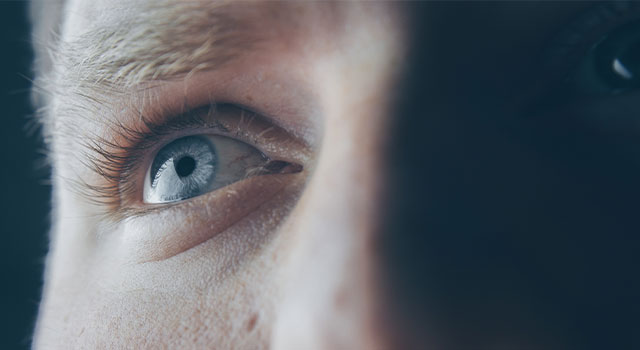 Collagen, water and protein make up the majority of the human eye, and tears are always present to help keep the eye moist. However, surplus fluid can occasionally accumulate inside the eye and signal a serious eye problem.
Collagen, water and protein make up the majority of the human eye, and tears are always present to help keep the eye moist. However, surplus fluid can occasionally accumulate inside the eye and signal a serious eye problem.
Several factors may contribute to this problem.
There are two primary sources of fluid inside the eye. The first is needed to flush out waste products from behind the cornea, leading it to flow out from the eye through the anterior angle. The second type of fluid is found in blood vessels that nourish the retina and macula at the back of the eye.
Conditions that Cause Excess Eye Fluid
Several conditions can result in excess eye fluid, and each is managed and treated in its own way to prevent eye damage and vision loss. These conditions include:
Macular Degeneration
Macular degeneration is the deterioration of the central part of the retina, called the macula. Fluid build-up on the macula causes the wet form of macular degeneration, which affects central vision and the ability to see fine details. This usually occurs when very fragile new blood vessels form in the retina. These abnormal blood vessels leak fluid, made up of plasma and blood into the retina.
Glaucoma
Glaucoma develops when the eye's drainage system becomes clogged, inhibiting the flow of fluid through the anterior angle and causing fluid to accumulate in the eye. Glaucoma can also develop when the eye produces more fluid than usual and is unable to drain it quickly enough. In both cases, as the fluid builds up inside the eye, the pressure inside the eye rises, potentially damaging the nerve fibers that send all our visual signals from the eye to the brain. The optic disc becomes hollow and cupped as a result of the injured nerves.
Glaucoma will progress if extra fluid continues to collect in the eye, and can lead to serious vision loss or blindness if left untreated.
Macular Edema
Macular edema occurs when there is a build-up of fluid in the macula. The macula is positioned in the middle of the retina, which is the neural tissue at the back of the eye that sends the light signals to the brain and allows you to see.
Damaged blood vessels in the retina cause fluid to accumulate in the macula. This leads to compromised vision, with common symptoms including blurred or wavy vision in the center of your field of vision.
Diabetic Macular Edema
Diabetic macular edema is a result of diabetic retinopathy. There are two types of diabetic retinopathy, based on the stage of the disease: nonproliferative retinopathy (when blood vessels in the retina enlarge and leak) and proliferative retinopathy (when abnormal new blood vessels form on the retina).
Blurred or double vision, as well as floating, dark patches in your vision, are all common symptoms of diabetic macular edema.
Central Serous Retinopathy
Central serous retinopathy occurs when fluid accumulates behind the retina. The fluid buildup is caused by leaking from the layer of blood vessels beneath the retina (choroid).
When the retinal pigment epithelium, the layer between the retina and the choroid, fails to function properly, fluid builds up behind the retina, causing the retina to detach and vision to be impaired. Symptoms include dimmed, distorted or blurred vision, as well as straight lines seeming crooked or bent.
Treatment for Excess Eye Fluid
Treatments often include reducing pressure produced by fluid buildup and treating the underlying cause of the buildup.
In diabetic macular edema, for example, your eye doctor will recommend treatment for your diabetes along with treatment for the retinal impairment that is causing fluid buildup.
In some circumstances, surgery may be required. For instance, glaucoma patients may require surgery to create a new opening from the eye through which fluid can drain. Certain medications can also assist in fluid drainage from the eye, which works to lower the pressure inside the eye or causes the eye to produce less fluid.
Intravitreal injection is a treatment used when there is a buildup of fluid in or under the retina. Anti-VEGF medications absorb fluid and stop fluid/blood from leaking out of blood vessels, which is a common occurrence in both macular edema and wet macular degeneration.
If you have signs of fluid buildup, it's essential to promptly speak with your eye doctor. Treatment will be more successful once the underlying disease is identified.
Contact River Place Vision Center today. We'll be happy to assist you in identifying the source of the problem and direct you to the appropriate treatment.
River Place Vision Center serves patients from Austin, Cedar Park, West Lake Hills, and Hudson Bend, Texas and surrounding communities.
Q: What is wet macular degeneration?
- A: Wet macular degeneration is an eye disease that causes blurred vision or a blind spot in your visual field. It is caused by abnormal blood vessels that leak fluid or blood into the macula, the section of the retina responsible for central vision. Symptoms like visual distortions and increased blurred vision tend to appear suddenly and quickly worsen.
Q: What other conditions can cause excess fluid in the eye?
- A: Other conditions that may cause excess fluid in the eye include:
- - Choroidal effusion - the buildup of fluid between the choroid, the sclera, and a layer of blood vessels on top of the retina.
- A retinal tear - may cause fluid to accumulate and lead the retina to detach.
- Chemosis - a swelling of the eye due to accumulation of fluid often caused by allergies or eye infection.
